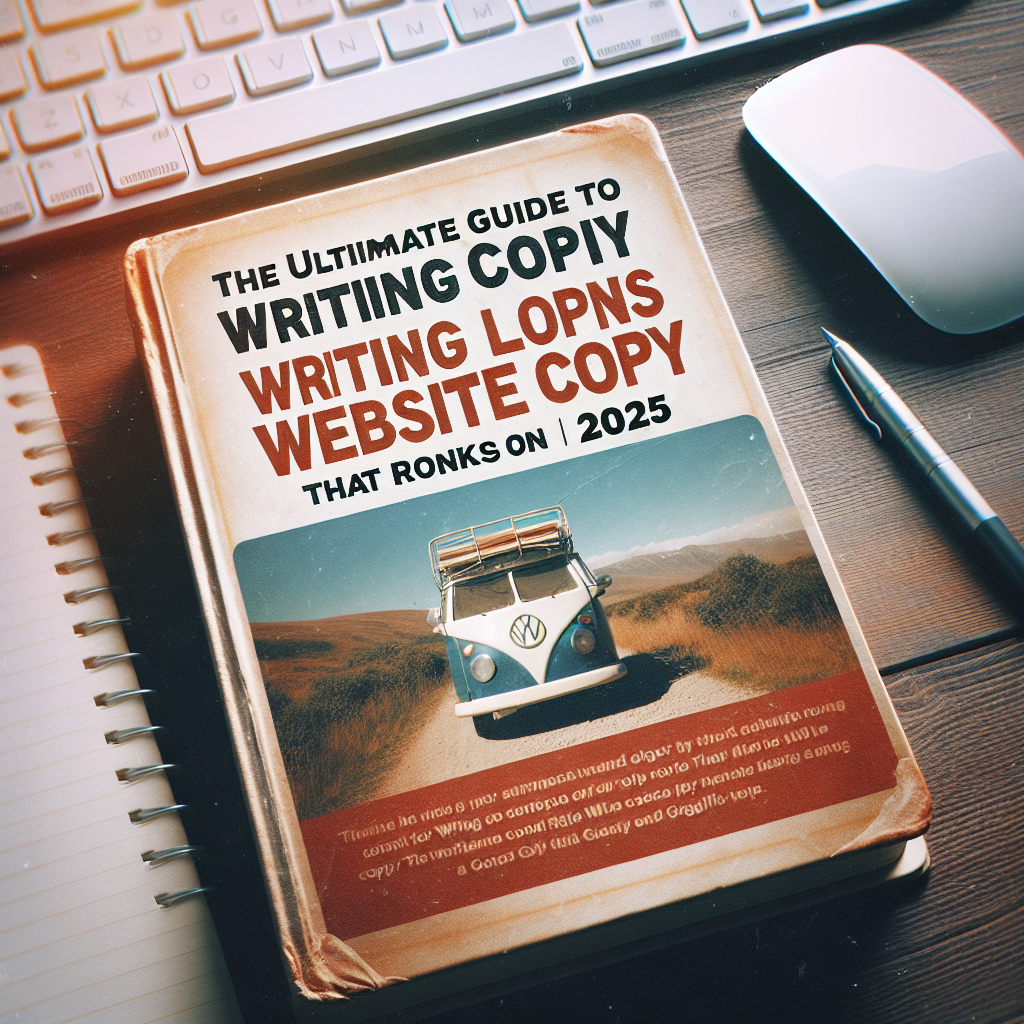The Ultimate Guide to writing website copy that ranks on Google in 2025
Table of Contents
- 1. Understanding Google’s 2025 Algorithm Updates
- 2. Keyword Research Strategies for 2025
- 3. Crafting Compelling Headlines
- 4. Writing Clear and Persuasive Subheadings
- 2025. Personalized Content for Audience Engagement
1. Understanding Google’s 2025 Algorithm Updates
Recent Changes and Their Impact
In 2025, Google’s algorithm continues to evolve rapidly, emphasizing user experience and content relevance. Staying updated on these changes is crucial for writing website copy that ranks on Google. Google now prioritizes AI-generated context and semantic search, meaning your content must be both human-friendly and optimized for machine understanding.
For example, Googleâs August 2025 updates introduced more advanced understanding of intent, making keyword stuffing less effective and rewarding high-quality, semantically rich content. Understanding these changes helps form the foundation of successful SEO in 2025. Itâs essential to adapt your writing strategies accordingly to maintain and improve your rankings.
How to Stay Updated with Google’s Algorithm
Regularly review Googleâs official blog and subscribe to SEO news outlets like Search Engine Land or Moz to track algorithm updates. Participating in industry forums and communities also allows you to share insights and learn from othersâ experiences.
Utilizing tools such as Google Search Console and SEMrush can help monitor your siteâs performance, identify potential issues, and adapt your content approach proactively. Keeping informed ensures that your website copy remains aligned with Googleâs evolving ranking factors.
2. Keyword Research Strategies for 2025
Leveraging AI-Driven Keyword Tools
In 2025, AI-powered keyword research tools like ChatSEO and Surfer SEO are game-changers. They analyze vast data sets to identify high-traffic, low-competition keywords and suggest related semantic terms. These tools ensure you’re writing website copy that ranks on Google by targeting the most relevant search terms.
For example, instead of just targeting “digital marketing,” you can discover niche keywords like “AI digital marketing strategies” or “voice search optimization,” enabling you to craft targeted content that captures specific search intents.
Understanding Search Intent and User Behavior
Effective keyword research isn’t just about volume; it’s about matching your content to what users are searching for. In 2025, understanding whether the intent is informational, transactional, or navigational is critical. Tailoring your website copy to meet these intents boosts your chances of ranking higher on Google.
Analytics platforms like Google Analytics and Hotjar can reveal how users interact with your site, helping you refine your keyword focus. Incorporate long-tail keywords and conversational phrases that align with real user queries for better engagement and rankings.
3. Crafting Compelling Headlines
The Power of Data-Driven Headlines
Headlines are the first impression of your website copy, and in 2025, data-driven and emotion-triggering headlines are more critical than ever. Use tools like CoSchedule Headline Analyzer to craft titles that resonate and appeal to both algorithms and human readers. Engaging headlines increase click-through rates, which positively affect your Google rankings.
Tips for Writing Attention-Grabbing Headlines
Use numbers, power words, and clear benefits to attract attention. Phrases like “Boost Your Rankings” or “Transform Your Website Today” generate curiosity and encourage clicking. Keep headlines conciseâaim for 60 characters or fewerâto ensure they display properly in search results.
Test different headlines regularly to see which generate the most engagement. Remember, compelling headlines are the gateway to your contentâs success.
4. Writing Clear and Persuasive Subheadings
Using Subheadings to Improve Readability and SEO
Subheadings break your content into manageable sections, making it easier for readers and search engines to understand. Incorporate variations of your target keywords naturally within subheadings to enhance SEO without keyword stuffing.
In 2025, Googleâs AI can interpret context better, so ensure subheadings accurately reflect the content beneath them. This alignment improves your chances of appearing in featured snippets or answer boxes, boosting your visibility in search results.
Best Practices for Effective Subheadings
Use descriptive, informative subheadings that entice readers to continue reading. Incorporate semantic keywords and user intent cues, such as “How to,” “Best Practices,” or “Tips for,” to increase relevance. Keep subheadings under 8 words and ensure they are enticing and straightforward.
5. Optimizing Content for Voice Search
Adapting Content for Voice Assistants
By 2025, voice search accounts for over 50% of all searches, making it vital to optimize your website copy accordingly. Create conversational, long-tail keyword phrases that match how people speak naturally. This adaptation improves your chances of ranking on Google voice snippets.
Best Practices for Voice Search Optimization
Answer common questions clearly and concisely within your content. Use natural language and include question-based phrases in your copy. Structured data markup helps voice assistants understand and showcase your content as featured snippets.
2025. Personalized Content for Audience Engagement
Using Data to Tailor Website Copy
In 2025, personalization is key. Use data insights to craft website copy that resonates deeply with individual user segments. Personalized content increases engagement, reduces bounce rates, and boosts your rankings, as Google favors user-centric websites.
Tools and Techniques for Personalization
Leverage AI personalization tools and CRM data to dynamically adapt your website content based on visitor behavior, location, or preferences. Such tailored content makes your site more relevant, encouraging longer visits and higher conversion rates.
Conclusion
Mastering the art of writing website copy that ranks on Google in 2025 requires understanding evolving algorithms, conducting strategic keyword research, crafting compelling headlines and subheadings, optimizing for voice search, and personalizing content for your audience. By implementing the tactics outlined in this guide, you’ll boost your SEO rankings, attract more visitors, and convert more leads. Remember, consistently refining your approach based on current trends and data will keep your website at the top of Googleâs search results in 2025 and beyond.
FAQ
1. How can I improve my chances of writing website copy that ranks on Google?
Focus on understanding Googleâs current algorithms, conduct thorough keyword research, create high-quality content that matches user intent, and optimize technical SEO aspects.
2. What are the most important SEO tactics for 2025?
Prioritize semantic search, voice search optimization, mobile-first design, personalized content, and leveraging AI-driven SEO tools for ongoing improvements.
3. How does keyword research in 2025 differ from previous years?
AI-powered tools and a focus on long-tail, conversational, and intent-based keywords are now more prominent, helping target specific user queries more effectively.
4. Why is personalization important in writing website copy that ranks on Google?
Personalized content engages users more effectively, increases dwell time, and improves conversion rates, all of which are factors that influence higher Google rankings in 2025.









